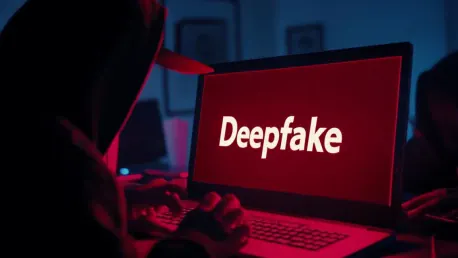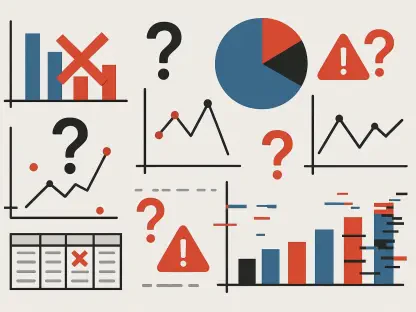The burgeoning advancement of generative artificial intelligence (GenAI) poses significant challenges to the reliability of visual evidence. As AI technology becomes more adept at creating convincing deepfakes, the once-unquestioned notion of “seeing is believing” is rapidly becoming outdated. This disruption not only carries profound implications for individual trust but also impacts broader societal mechanisms that rely on visual proof, such as the media, legal systems, and political processes.
The Rise of Generative Artificial Intelligence
Generative Adversarial Networks (GANs) have been foundational to AI-driven image and video synthesis. Introduced in 2014 through the seminal paper “Generative Adversarial Nets,” GANs have significantly contributed to the development of deepfake technology. By pitting two neural networks against each other—a generator and a discriminator—GANs can produce remarkably realistic images and videos. Their mainstream application has sparked both public fascination and concern, as these tools can be used for a variety of purposes, both creative and malicious.
The term “deepfake” was coined in 2017 when GANs were utilized to generate synthetic celebrity pornography. This marked an early public encounter with the technology’s potential to fabricate hyper-realistic yet entirely fictitious images and videos. The awareness and subsequent alarm surrounding deepfakes underscored the profound impact such technology could have on public trust and media integrity. This transformative capability of GANs has since been exploited in various domains, leading to a surge in research and development aimed at both creating and detecting deepfakes.
Pervasive AI-Generated Images
GenAI tools have proliferated, becoming readily accessible and affordable, making them a frequent but often unnoticed presence on news and social media feeds. This ubiquity brings to light the challenges of misrepresentation and the difficulties in distinguishing authentic content from manipulated images. The ease with which AI-generated content can be produced and disseminated contributes to a landscape where the authenticity of visual evidence is increasingly questionable.
A revealing survey conducted by a research team at the University of Waterloo illustrates this issue vividly. Participants in the study were only 61% accurate in distinguishing real images from fake ones in 2022, highlighting the growing difficulty of such tasks. As GenAI technology becomes more sophisticated, the accuracy of human judgment is likely to decline further. This declining ability to discern fake from real points to a future where visual content may no longer be a reliable source of evidence.
Detection Difficulties
Previously, certain telltale signs helped identify AI-generated images. Features like unrealistic eyes, teeth, ears, and hair served as indicators of manipulation. However, as GenAI tools have become more refined, these signs are now less useful. The increasing sophistication of AI-generated content necessitates the development of new detection methods and a heightened level of awareness among the public.
Early milestones in the advancement of realistic synthetic images include Google’s “DeepDream” images in 2015 and Philip Wang’s “ThisPersonDoesNotExist” website in 2019. These projects showcased significant leaps in the realism of AI-generated images, pushing the boundaries of what was technologically feasible. Despite these advancements making synthesis methods more convincing, detecting deepfakes remains a critical challenge for researchers and practitioners in the field.
Challenges to Detection Algorithms
Efforts to develop algorithms for detecting deepfakes have shown significant limitations, particularly when dealing with low-resolution images or subjects in poor lighting conditions. Traditional indicators of manipulation, such as unusual speech rates, abnormal facial expressions, reflections in the eyes, and variations in image saturation, have become less effective as AI technology advances. These imperfections are being minimized by improving GenAI models, making the detection of AI-generated content increasingly arduous.
In response to these continuous advancements, the Deepfake Detection Challenge was launched in 2019 to stimulate the development of sophisticated detection models. The challenge underscored the urgent need for robust algorithms capable of keeping pace with rapidly evolving generative technologies. However, the detection models developed so far have not been foolproof, indicating the ongoing need for enhanced and innovative detection techniques.
Regulatory and Ethical Considerations
The pressing need for regulatory measures and ethical considerations in the realm of AI technology is underscored by prominent figures such as Yoshua Bengio. Identifying significant dangers posed by unregulated GenAI technology, Bengio has advocated for comprehensive AI regulation. Such regulatory frameworks are essential to limit the misuse of GenAI tools and ensure that developments in AI contribute positively to societal well-being.
These concerns were further echoed in the 2024 open letter, which called for better regulations surrounding deepfakes. Bengio also led the first International AI Safety Report, published in early 2025, emphasizing the critical need for concerted regulatory action. The call for stronger oversight reflects a broader recognition that the rapid advancement of AI technologies requires robust ethical guidelines and enforcement mechanisms.
Malicious Uses of GenAI
The rapid progress in generative artificial intelligence (GenAI) presents notable challenges to the credibility of visual evidence. As AI technology becomes increasingly proficient in creating realistic deepfakes, the long-held belief that “seeing is believing” is quickly losing its validity. This technological shift has profound consequences, not only for personal trust but also for wider societal structures that rely on visual verification, such as media, the legal system, and political processes. The ability of GenAI to fabricate seemingly authentic images and videos means that what we see with our own eyes can no longer be taken at face value. This calls into question the authenticity of visual evidence and poses ethical dilemmas and dependencies on new methods to verify truth. Consequently, institutions and individuals alike must adapt to a new reality where discerning fact from fiction is increasingly challenging, complicating efforts to maintain trust and integrity in the digital age.









